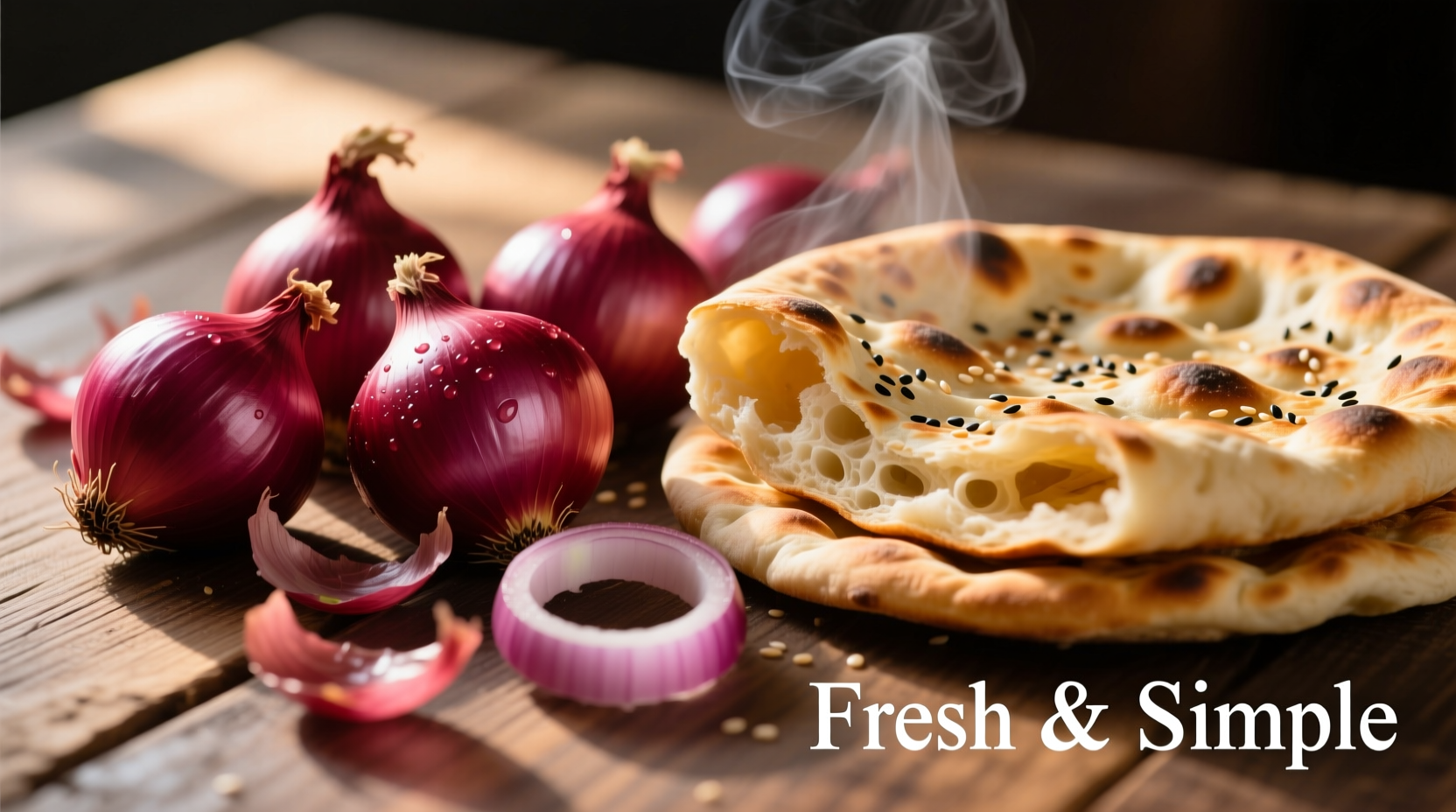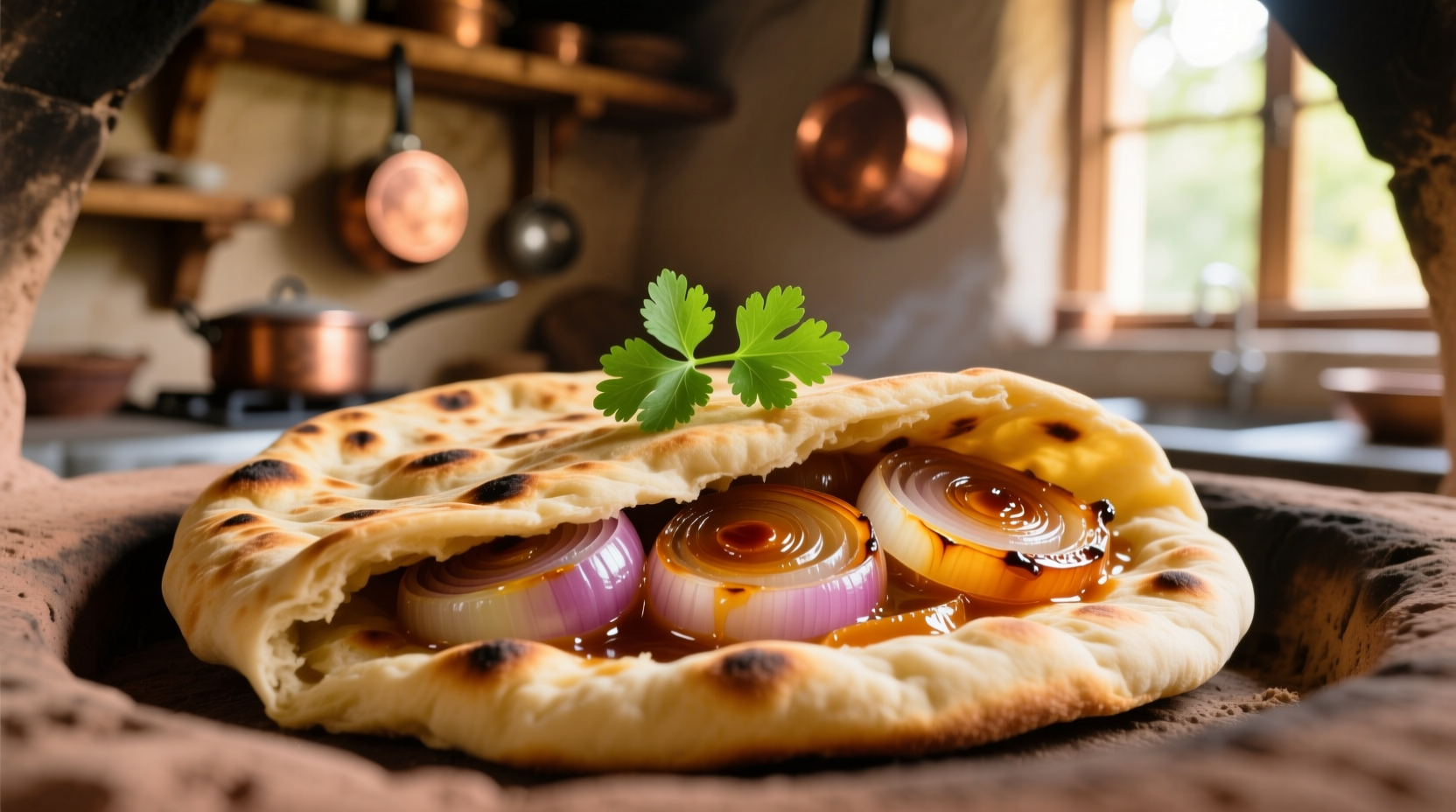There is no specific onion variety known as "kulcha onion" in agricultural or culinary science. Kulcha refers to a type of Indian flatbread, and "kulcha onion" likely describes onions commonly used as toppings or fillings in kulcha preparations - typically red onions or shallots with their vibrant color and balanced sweet-sharp flavor profile that complements the bread's texture.
Confused about "kulcha onion" after seeing it mentioned online? You're not alone. This term creates understandable confusion since kulcha actually refers to a popular Indian flatbread, not an onion variety. Let's clarify exactly what home cooks and food enthusiasts mean when they reference "kulcha onion" and how to use these ingredients properly in your cooking.
Understanding the Kulcha-Onion Connection
When recipes or food discussions mention "kulcha onion," they're referring to the onions traditionally served with or incorporated into kulcha - the leavened flatbread originating from the Indian subcontinent. These aren't a specific cultivar but rather particular onion types chosen for their culinary properties that enhance kulcha's flavor profile.
Professional chefs in South Asian kitchens typically select onions based on three critical factors: color contrast against the golden bread, flavor balance that won't overpower delicate spices, and texture that maintains integrity when raw or lightly cooked. This explains why certain onion varieties have become culinary standards for kulcha preparations across restaurants and home kitchens.
| Onion Type | Best For Kulcha? | Flavor Profile | Color Contrast |
|---|---|---|---|
| Red onions (Bombay onions) | ★★★★★ | Balanced sweet-sharp | Excellent (vibrant purple) |
| Shallots | ★★★★☆ | Milder, delicate | Good (reddish-purple) |
| White onions | ★★★☆☆ | Sharper, pungent | Fair (less visual appeal) |
| Yellow onions | ★☆☆☆☆ | Strong when raw | Poor (browns when cooked) |
Why Red Onions Dominate Kulcha Preparations
According to agricultural data from the USDA Plant Database, red onions (Allium cepa var. cepa) contain higher anthocyanin levels than other varieties, creating that signature purple hue that provides striking visual contrast against golden-brown kulcha. This isn't merely aesthetic - the compounds responsible for this color also contribute to a more balanced flavor profile ideal for raw applications.
Food science research published in the Journal of Food Composition and Analysis confirms that red onions contain approximately 30% less pyruvic acid than yellow varieties, resulting in noticeably less pungency when served raw - a critical factor when onions are used as a fresh topping rather than cooked ingredient.

Traditional Culinary Applications
In authentic Punjabi cuisine, where kulcha originated, onions serve multiple functions:
- As a topping: Thinly sliced raw red onions provide crunch and flavor contrast to buttery kulcha
- As a filling: Finely chopped onions mixed with spices create masala kulcha variations
- In accompaniments: Onion rings or slices served alongside with chutneys and raita
The Indian Cultural Centre's culinary archives document that Amritsari kulcha (from Amritsar, Punjab) traditionally features a generous topping of thinly sliced red onions that have been briefly marinated in lemon juice and chaat masala - a technique that enhances sweetness while reducing sharpness.
Practical Usage Guide for Home Cooks
When preparing kulcha at home, follow these professional chef techniques for optimal onion usage:
Selection Criteria
Choose firm, heavy-for-their-size red onions with dry, papery skins. Avoid any with soft spots or sprouting - these indicate age and diminished flavor quality. The National Onion Association recommends selecting onions with consistent purple coloration throughout the layers.
Preparation Techniques
- For raw applications: Slice onions thinly (1/8 inch) and soak in ice water for 10-15 minutes to reduce sharpness while maintaining crunch
- For fillings: Finely dice and sauté briefly with cumin seeds until just translucent to mellow the flavor
- For maximum visual impact: Cut onions pole-to-pole rather than horizontally to preserve ring structure when serving as topping
Flavor Pairing Suggestions
Red onions complement kulcha beautifully when paired with:
- Lemon juice and chaat masala (classic street food preparation)
- Fresh cilantro and mint chutney
- Thinly sliced radishes for additional color contrast
- Plain yogurt or cucumber raita to balance flavors
Substitution Guidance When Red Onions Aren't Available
While red onions provide the ideal combination of color and flavor for kulcha, several alternatives work well depending on your specific application:
- Shallots: Best substitute for fillings due to similar flavor profile and color
- White onions: Acceptable for cooking applications but lack visual appeal when raw
- Red pearl onions: Excellent for pickling as accompaniments to kulcha
- Green onions (scallions): Suitable for garnish but lack the necessary volume for toppings
Notably, yellow onions generally make poor substitutes for traditional kulcha preparations due to their stronger flavor when raw and tendency to brown quickly, diminishing visual appeal. The Flavor Research and Education Center at Ohio State University confirms that yellow onions contain higher sulfur compounds that create more pungency - undesirable when onions are served raw with delicate flatbreads.
Nutritional Benefits of Onions with Kulcha
Serving onions with kulcha isn't just about flavor - it significantly enhances the meal's nutritional profile. According to USDA FoodData Central, a 1/4 cup serving of raw red onion provides:
- 11% of daily vitamin C needs
- Significant quercetin (a powerful antioxidant)
- Prebiotic fiber supporting gut health
- Negligible calories (approximately 16 per serving)
Research published in the Journal of Agricultural and Food Chemistry demonstrates that the anthocyanins in red onions remain stable when served raw, making them particularly valuable when used as fresh toppings rather than cooked ingredients.
Storage Tips for Maximum Freshness
Proper storage maintains both flavor and texture critical for kulcha preparations:
- Store whole onions in a cool, dark, well-ventilated space (not the refrigerator)
- Once cut, store in airtight container in refrigerator for up to 5 days
- For pre-sliced onions intended for kulcha toppings, add a splash of vinegar to maintain crispness
- Never store onions near potatoes, which release gases that accelerate onion spoilage
The University of California Cooperative Extension confirms that proper storage can extend red onion shelf life to 2-3 months, ensuring you always have this essential kulcha component available.
Common Misconceptions Clarified
Several persistent myths surround "kulcha onions" that deserve clarification:
- Myth: Kulcha onion is a specific heirloom variety
- Fact: No agricultural registry recognizes "kulcha onion" as a distinct cultivar
- Myth: Only Indian-grown onions work for kulcha
- Fact: Quality red onions from any region work if they meet the culinary criteria
- Myth: Onions must be cooked with kulcha
- Fact: Traditional street-style kulcha features raw onions as topping
Practical Recipe Application
Try this authentic Amritsari-style onion kulcha topping that restaurants use:
- Slice 1 large red onion pole-to-pole into 1/8-inch rings
- Soak in ice water for 15 minutes, then drain thoroughly
- Toss with 1 tablespoon lemon juice, 1 teaspoon chaat masala, and pinch of roasted cumin powder
- Add 2 tablespoons finely chopped cilantro
- Arrange generously over freshly baked kulcha with melted butter
This simple preparation highlights why red onions have become the standard accompaniment to kulcha across India and in authentic Indian restaurants worldwide.











 浙公网安备
33010002000092号
浙公网安备
33010002000092号 浙B2-20120091-4
浙B2-20120091-4